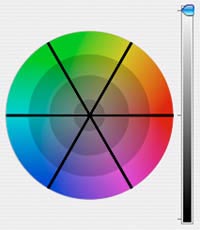Color Theory

Color theory can help describe what is perceived more precisely. It offers a language that is shared and reasonably precise. Color theory can help make perception more precise. Language encodes thought and a more precise and nuanced language can lead to more sensitive perception. Color theory can help analyze what makes some color relationships particularly successful and what makes others less successful. It illuminates the dynamic interactions between the elements of color, which can be used to guide decisions in selecting and adjusting color relationships.
Color theory is best used to inform color choices rather than to make them. Theory lays a foundation for exploration (guiding inquiry toward areas with greater potential and away from areas with less potential). It is not a substitute for discovery. Jazz musicians Keith Jarrett and Theolonius Monk mastered music theory, but even they were surprised by their most original compositions; their compositions were informed and empowered by theory but not determined by it. Theory is the sum of what we know, but it does not contain what we do not yet know. It can prime conditions for a breakthrough, but it cannot make one. It can be used to empower a unique or authentic sensibility, but it is not a substitute for one.
Find out more in the current issue of Digital Photo Pro.
Find out more in my color theory ebooks.


No Comments